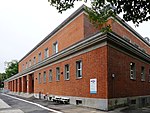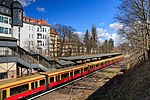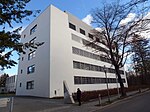Lichterfelde West

Lichterfelde West is part of Lichterfelde in the Steglitz-Zehlendorf borough of Berlin. It is known for its historic mansions, tree-lined streets and green squares. Next to Dahlem and Grunewald, Lichterfelde West is one of the German capital's wealthiest and most sought-after residential areas. Since the German government's move to Berlin in 2000, it has seen the highest rises in real-estate prices of any area in former West-Berlin. Today, many mansions in Lichterfelde West are used by diplomats for representative purposes.Lichterfelde West is home to the Berlin Botanical Garden and Museum, the Schlosspark Lichterfelde manor and park, as well as the Charité university hospital's Benjamin Franklin Campus. The former Prussian Main Cadet School is home to the German Federal Archives, while the German Federal Intelligence Service (BND) operates from a historic building in Lichterfelde West. A new "Business and Innovation Center" of nearby Free University of Berlin is being developed close to the Botanical Garden.
Excerpt from the Wikipedia article Lichterfelde West (License: CC BY-SA 3.0, Authors, Images).Lichterfelde West
Baseler Straße, Berlin Lichterfelde
Geographical coordinates (GPS) Address Nearby Places Show on map
Geographical coordinates (GPS)
| Latitude | Longitude |
|---|---|
| N 52.435833333333 ° | E 13.295277777778 ° |
Address
Kita Johannes
Baseler Straße 67
12205 Berlin, Lichterfelde
Germany
Open on Google Maps










